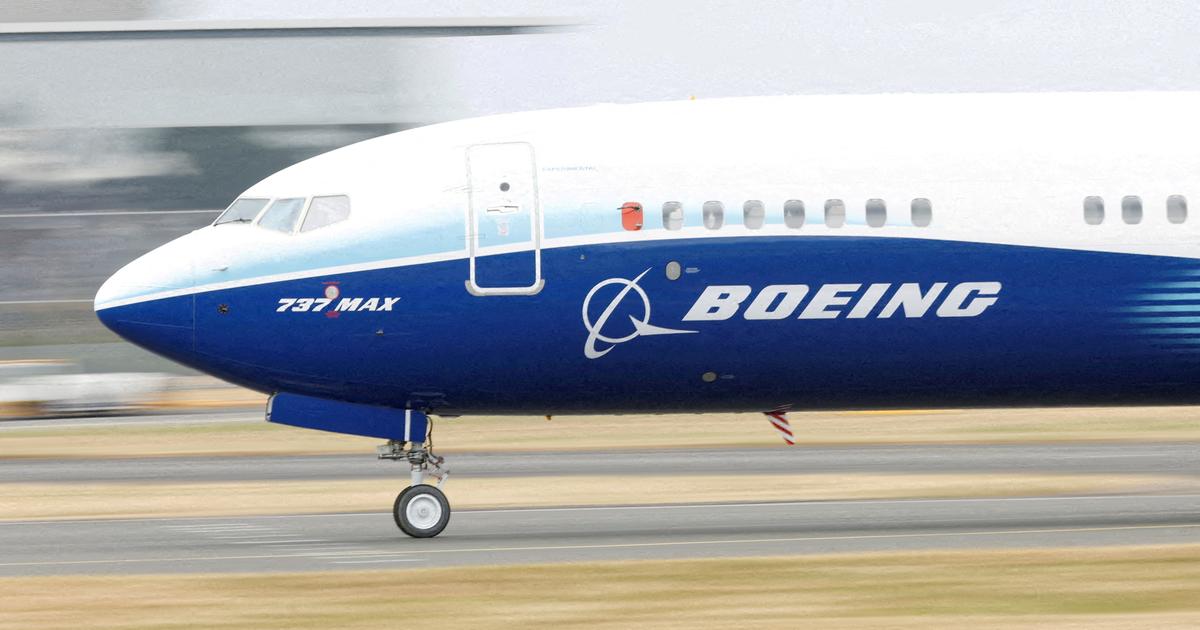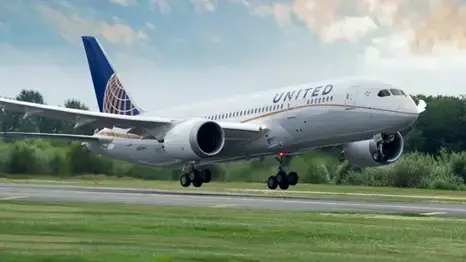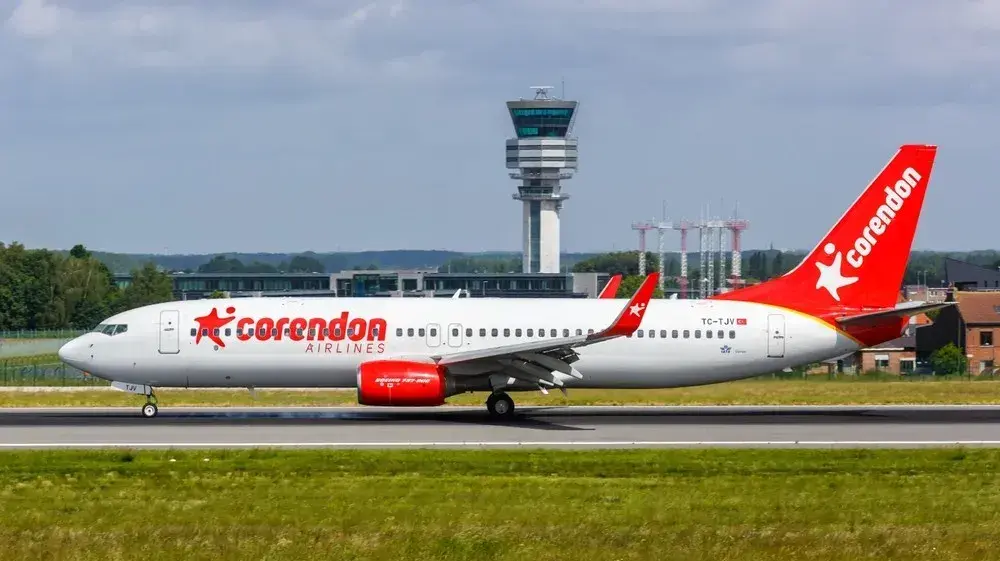Why didn't the US anticipate 5G like Europe?
2:45
New York (CNN Business) --
Potentially abysmal air travel disruptions were averted this week when telecom giants made a last-minute change to their planned 5G network rollout amid fears that new cell towers could interfere with a key component in aircraft that allows them to land safely during low visibility conditions.
The warnings about mass flight cancellations came as AT&T, Verizon and the airline industry reached an agreement to delay 5G rollouts at major airports.
And on Thursday, the Federal Aviation Administration (FAA) authorized a greater number of commercial aircraft to fly in situations where pilots consider possible 5G interference to be the most dangerous.
Now, almost 80% of the entire commercial aircraft fleet in the United States has that authorization.
In the end, the crisis appeared to be largely averted.
No plane fell from the sky.
And, with a few exceptions, most air travel remained as scheduled.
But we are not sure yet.
This is how Europe deployed the 5G network without affecting aviation
The deal to delay 5G rollout at airports is only a temporary fix, and it's unclear if all parties have a specific deadline they're working towards.
A significant number of aircraft have not yet been cleared to land in the most dangerous situations.
Regional airlines have exclaimed that they have been left out of the discussions and still face long- and short-term impacts.
And, to the public's knowledge, a permanent solution has not yet been reached.
advertising
This is everything we know, and what we don't know, about the problem.
Why didn't the US anticipate 5G like Europe?
2:45
What is the FAA agreement that 'authorized' some planes but not others?
Radar altimeters are devices that use radio waves to measure how far an aircraft is off the ground, and are essential for landing commercial aircraft in bad weather.
At the root of the current problem is the fact that the 5G frequencies Verizon and AT&T just rolled out, known as the C-band, are very close to the frequencies used by radar altimeters, raising concerns about interference.
In the past two weeks, radar altimeter makers have rushed to "evaluate data from wireless carriers to determine how robust each model" of radar altimeter is and whether it can still work even when flying near a 5G antenna. active, according to the FAA.
In a statement Thursday, the FAA said it has issued further approvals allowing 78% of the US commercial aircraft fleet to make low-visibility landings at airports near where wireless companies have deployed their 5G network.
Essentially, regulators said they now considered it safe for aircraft using one of 13 types of radar altimeters.
Approved models include:
All Boeing 717, 737, 747, 757, 767, 777, 787, MD-10/-11 aircraft
All Airbus A300, A310, A319, A320, A330, A340, A350 and A380 models
Some Embraer 170 and 190 regional jets
But of course, more than 20% of the US commercial aircraft fleet has not been approved.
And the FAA warned that it anticipates "some altimeters will be too susceptible to 5G interference."
“In order to preserve safety, aircraft with such altimeters will be prohibited from making low-visibility landings where the 5G network is deployed because the altimeter could provide inaccurate information,” the agency said.
The agency also warned that buffers that are reducing 5G signal strength around certain airports are essential to keeping operations safe.
A cell tower is seen and in the background a Southwest Airlines Co. Boeing 737 aircraft lands at Los Angeles International Airport (LAX) in Los Angeles, California, on January 19.
However, it is not clear why the FAA and altimeter manufacturers did not perform these evaluations sooner.
On its website, the FAA claims that in the past two weeks it "received vital data from the 5G network" that made these decisions possible and "facilitated data sharing" between altimeter manufacturers and wireless carriers.
What is happening with regional carriers?
They're still in limbo, according to Faye Malarkey Black, who, as president of the Regional Association of Airlines, represents airlines that connect larger hubs to dozens of cities across the country.
Regional flights are branded as American Eagle, Delta Connection and United Express, and are outsourced to companies or subsidiaries such as Envoy, ExpressJet, Republic Airways and SkyWest Airlines.
And for them, "the crisis has not been averted," Black warned.
A Delta Air Lines Inc. aircraft is prepared to maneuver at Raleigh-Durham International Airport (RDU) in Morrisville, North Carolina, USA, on Thursday, January 20.
Bombardier planes, often flown by regional airlines, have not received a green light for their altimeters.
And Black said rural airports will continue to "take a big hit to [their] performance when the weather changes."
"We will never compromise on security," Black wrote on Twitter.
"Flights will be on the ground. Short term = small [communities] will have fewer options and fewer services.
How did we get here and who is to blame?
We're not sure. The airline industry has known for years that 5G deployment was coming. Part of the problem may be an ongoing power struggle between the FAA and the Federal Communications Commission (FCC), which is the US arbiter for all things radio spectrum and sold spectrum band to wireless companies for $80 billion last year.
The FAA and FCC knew that airlines believed that a travel disaster could be imminent if 5G deployment was implemented without addressing altimeter concerns.
However, wireless carriers had largely dismissed those concerns and it wasn't until international airlines began canceling flights ahead of Wednesday's 5G rollout that everyone began announcing significant progress in finding a solution.
What is happening with 5G and airlines in the United States?
And that's how we got to where we are now, with temporary "buffer zones" preventing 5G deployment near certain airports (we don't know exactly which ones) and a massive scramble to determine exactly how much altimeters will be affected by this. new cell service.
As for who is to blame, Verizon and AT&T -- which owns CNN's parent company, WarnerMedia -- placed much of the blame on the FAA on Tuesday.
But the FAA has insisted the aviation industry's concerns are real, and with the industry already reeling from the pandemic, airlines desperately hope to avoid giving people yet another reason not to fly.
Emirates chairman Sir Tim Clark was blunt about what he sees as the problem, blaming the entire fabric of the US system and calling the situation "one of the most criminal, absolutely irresponsible" he has seen in his aviation career.
He added that the "risks and dangers" should already have been assessed.
5G technology worries commercial aviation 0:54
How do you fix all this?
It's not clear.
The discussion between wireless carriers AT&T and Verizon, as well as the airline industry and federal regulators, is still ongoing.
We're not sure if or when they'll publicly announce a definitive path forward, but decisions will have to be made, especially considering the 5G "buffer zones" around major air hubs are still temporary.
Tom Wheeler, who served as FCC chairman from 2013 to 2017, penned some suggestions in a November article for The Brookings Institution, where he said concerns about spectrum interference could be allayed by making adjustments to the altimeters themselves.
The problem?
It is likely to cost billions of dollars, billions that no corporation wants to take out of their own pockets.
"There are only three sources of such funds for the aviation industry. The government could pay with the almost $82 billion generated from the sale of licenses to use the [5G spectrum in question]; that would probably require an act of Congress" , Wheeler wrote.
"The wireless industry could pay an additional fee on top of the billions it has already spent on spectrum that the government said would be ready for use on December 5. The aviation industry, knowing for some time of the new concession 5G, could pay to fix the altimeters."
Wheeler, for his part, also placed much of the blame for this debacle on a lack of leadership and a lack of a national spectrum policy.
Whats Next?
We are still waiting for updates on the negotiations from the FAA, the FCC and all other parties involved.
It's unclear if there's a deadline they're working towards, nor is it clear how long the "temporary" 5G buffer zones will remain in place.
What you should know about the 5G network 3:36
What exactly is the problem with 5G?
Telecommunications companies have rolled out 5G networks in various locations across the United States in recent years, bringing the next generation of cell phone data speeds.
But on Wednesday, Verizon and AT&T activated their C-band 5G networks, an important set of radio frequencies that will power the Internet as we know it.
Unfortunately, C-band is close to the frequency band used by aircraft radar altimeters, an instrument that tells pilots how high their plane is off the ground and is crucial for landing planes in low visibility conditions. .
Why is this happening in the US and not abroad?
Europe rolled out the 5G network without any impact on aviation, which is in stark contrast to the rage going on in the US.
The distinction lies in a few key technical details.
Wireless carrier companies in Europe launched a new 5G service in the spectrum range from 3.4 to 3.8 GHz. The United States is rolling out 5G service in a radio wave spectrum with frequencies between 3.7 and 3. 98 GHz, which is a faster range and a bit closer to the spectrum used by radar altimeters, which is between 4.2 and 4.4 GHz.
And, according to the FAA, that's too close for comfort.
Other countries are also using other mitigation tactics to avoid interference, such as restricting the placement of 5G antennas near airfields and requiring them to tilt downward to limit potential interference with aircraft.
As for how to remedy the problems in the United States, Nicholas Calio, president and CEO of Airlines for America, weighed in on CNN: "The solution is basically to determine where the bandwidth is, the amount of energy used, the inclination of the antennas, the location of the antennas," he said.
"There are mitigations that can be implemented, it's just going to take time to do it. The fix can be almost immediate, tower by tower."
Which airports are affected?
We do not know.
When the FAA issued its order in December, it included a list of airports that would need to have 5G buffer zones.
But it's unclear whether AT&T and Verizon delayed 5G rollouts in all or some of those locations.
It's also unclear how long they plan to delay deployment or if changes to those antennas will ultimately need to be made before they can be turned on.
CNN's Samantha Murphy Kelly, Charles Riley and Brian Fung contributed.
5G




/cloudfront-eu-central-1.images.arcpublishing.com/prisa/MQ62V24GUVHPRDNYKHSOUZO7ZE.jpg)







/cloudfront-eu-central-1.images.arcpublishing.com/prisa/KMEYMJKESBAZBE4MRBAM4TGHIQ.jpg)


